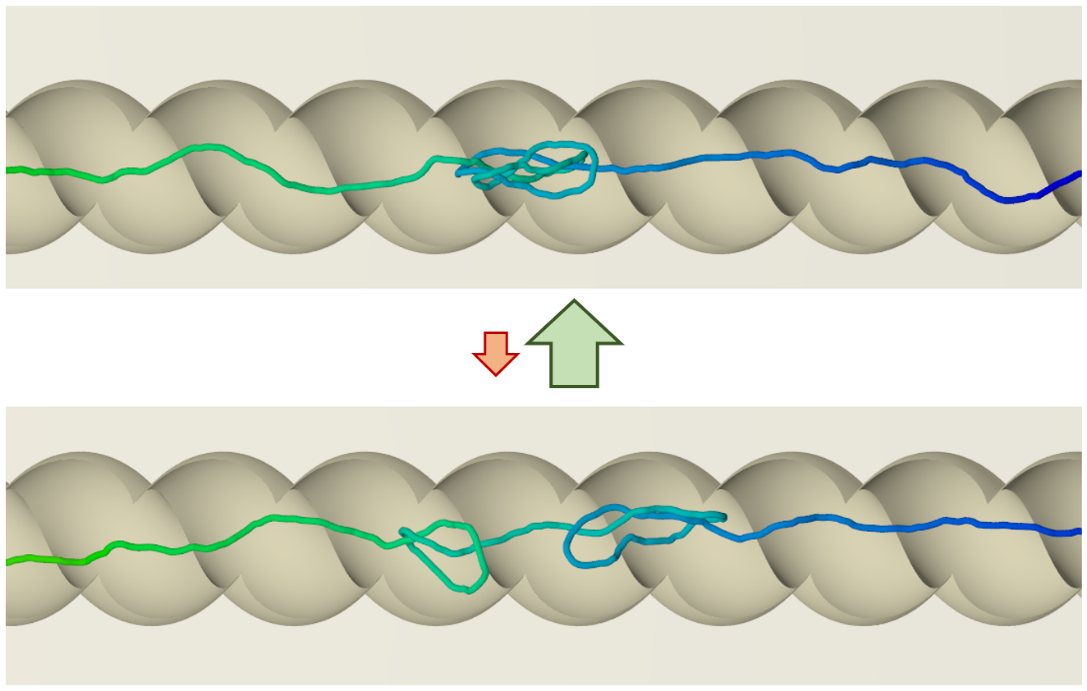Status
Completed
Period
19-26 Marzo 2023
Applicant
Prof. Dušan Račko
Home Institution
Polymer Institute, Slovak Academy of Sciences, Dubravska cesta 9, 84541 Bratislava, Slovakia
Host Contact
Prof. Luca Tubiana
Host Institution
Dipartimento di Fisica, Università degli studi di Trento, via Sommarive 14, 38123 Povo, Trento, Italy
Aim of the mission
During the STSM, exploration of knotted polymers containing composite knots in chiral confinement were carried out by means of coarse-grained molecular dynamics simulations. We designed the simulations as of a single though infinite DNA molecule with equichiral or antichiral knots in lefthanded or righthanded confinement. As for the knot topologies we concluded after discussing various scenarios the most suitable to exhibit the effect of the channels would be using +3_1#+3_1, +3_1#-3_1 and +3_1#4_1 knots, where + and – signs indicate writhe of the knots and 4_1 is an amphichiral knot.
Summary of the Results
The composite knots were incorporated into an infinite helical channel that represents chiral confinement with left-handed and right-handed windings of the helical grooves. As of the other parameters of the
simulations we assume a portion of 5 kbp of DNA per periodic image as sufficient to for obtaining also configurations unaffected by mutual interaction of knots. The effect of chiral confinement will be also explored and shown as a function of confinement strength given as a ration o channel’s diameter and DNA’s persistence length, D/P. The confinement strength is chosen with D/P = 2 i , i = -1, 0, 1, on the border of strong, intermediate and weak confinement. In order to collect enough statistics for analyses we agreed upon completing at least 30 molecular dynamics runs with 5 x 10 7 time units, i.e. 5 x10 9 integration steps. The total size of the simulations with 30 repeated runs for each simulation setting accounts for performing at least 450 long simulation runs. We have completed 150 long simulation runs, and further 150 simulations are currently running out of the total 450 planned runs, that should be finished with a few following weeks. The simulations show that a composite knots are stabilized by helical confinement if the component knots are antichiral, while in equichiral configuration the component knots prefer staying separated.
Dissemination
We have drafted a paper and pin-pointed a scientifically renowned journal of interest for submission. During the STSM, I held a seminar on Monday 20 March, for the students and Department staff. The period of the STSM was filled with fruitful discussions with students and colleagues from statistical physics and biological group and Department’s staff. We see also possible spin-off of the work in the drafted paper taking into account external forces and investigation of the curvature of the channels. The results from the STSM will be further disseminated during scientific events such as workshops
and conferences.

